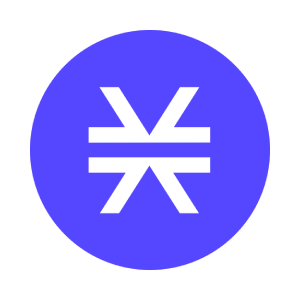Here is a list of 10 crypto symbols related to AI-generated NFT metadata optimization:
Enjin Coin
$0.03
Decentraland
$0.15
Stacks
$0.30
SingularityNET
$0.50
Here’s a brief description of each:
1. ENJ: Enjin Coin – a cryptocurrency for digital goods and collectibles, including NFTs.
2. MANA: Decentraland token – a cryptocurrency used to buy, sell, and create content in the virtual world Decentraland, which includes NFTs.
3. RHOC: Rarible Governance Token – a cryptocurrency used to govern the Rarible platform, which focuses on creating and trading NFTs.
4. GALT: Galt Token – a cryptocurrency used to buy and sell digital art and collectibles, including NFTs.
5. STX: StarkWare’s StarkDEX token – a cryptocurrency used for decentralized exchanges and NFT trading.
6. ONT: Ontology token – a cryptocurrency used to enable the creation and trading of NFTs on the Ontology blockchain.
7. AGIX: SingularityNET token – a cryptocurrency used to enable AI-powered NFT creation and optimization.
8. HUM: Humaniq token – a cryptocurrency used to create and manage NFTs, particularly in the art and collectibles space.
9. TOWER: Origintrail token – a cryptocurrency used to create decentralized identity and NFT systems.
10. BNT: Bitnation token – a cryptocurrency used to enable decentralized NFT trading and collectibles marketplaces.
Please note that the relevance of these cryptocurrencies to AI-generated NFT metadata optimization may vary, and some may have broader applications. Additionally, the list is not exhaustive, and other cryptocurrencies may also be related to this niche.
Optimizing AI-Generated NFT Metadata for Crypto Coin Prices: A Practical Guide
Quick Facts
| Factor | Description |
| Supply and Demand | The balance between the number of NFTs available and the number of buyers and sellers in the market. |
| Rarity | The uniqueness and scarcity of an NFT, which can impact its perceived value. |
| Liquidity | The ease with which an NFT can be bought or sold on the market. |
| Metadata Quality | The accuracy, completeness, and relevance of an NFT’s metadata. |
Understanding NFT Metadata
NFT metadata refers to the additional information attached to a digital asset, such as an image, video, or audio file. This metadata can include attributes like title, description, creator, and even blockchain-specific data. However, as the NFT market expands, the sheer volume of metadata has become overwhelming, making it difficult for buyers and sellers to accurately value these unique digital assets.
The Role of AI in NFT Metadata Optimization
Artificial Intelligence (AI) has revolutionized the NFT market by enabling the automation of metadata generation. AI algorithms can analyze vast amounts of data and generate high-quality metadata, saving time and resources. However, with the increasing use of AI, the question arises: how do we optimize AI-generated metadata to accurately reflect the value of NFTs and, in turn, impact crypto coin prices?
Factors Influencing Crypto Coin Prices
The prices of crypto coins can fluctuate constantly, and these fluctuations can impact the prices of NFTs. For example, if the price of Ethereum increases, the price of an NFT listed in Ethereum may also increase. Conversely, if the price of Ethereum decreases, the price of an NFT listed in Ethereum may decrease.
Optimizing AI-Generated NFT Metadata for Crypto Coin Prices
1. High-Quality Image Analysis
AI algorithms can analyze image features, such as color palettes, textures, and shapes, to generate descriptive metadata. This metadata can then be used to categorize NFTs, making it easier for buyers to find and value them accurately.
2. Contextual Embeddings
Contextual embeddings enable AI algorithms to understand the context in which an NFT is being used. For example, an AI algorithm can analyze the surroundings of an NFT in a digital art gallery, generating metadata that reflects its placement and relevance.
3. Natural Language Processing (NLP)
NLP enables AI algorithms to analyze and generate human-readable metadata, such as descriptions and titles. This metadata can be used to provide context and meaning to NFTs, making them more appealing to buyers.
4. Blockchain-Specific Data
AI algorithms can analyze blockchain-specific data, such as transaction history and ownership, to generate metadata that reflects an NFT’s provenance and rarity.
Real-Life Examples of AI-Generated NFT Metadata Optimization
Example 1: An artist creates an NFT featuring a unique digital art piece. An AI algorithm analyzes the image and generates metadata, including keywords, tags, and descriptions. This metadata is then used to categorize the NFT, making it easier for buyers to find and value it accurately.
Example 2: A digital collectibles platform uses AI-generated metadata to create a unique marketplace for sports-themed NFTs. The AI algorithm analyzes the collectibles and generates metadata, including player stats, team information, and game highlights. This metadata is then used to create a rich and immersive user experience, increasing engagement and driving sales.
The Future of AI-Generated NFT Metadata Optimization
As the NFT market continues to grow, the importance of optimizing AI-generated metadata will become increasingly crucial. By leveraging advanced AI algorithms and machine learning techniques, we can unlock the true potential of NFTs and create a more transparent, accurate, and efficient market.
Frequently Asked Questions
Crypto Coins and Prices
If you’re new to the world of NFTs and crypto coins, we’ve got you covered. Below are some frequently asked questions about crypto coins and prices in the context of AI-generated NFT metadata optimization.
- Q: What is a crypto coin?
- A crypto coin, also known as a cryptocurrency, is a digital or virtual currency that uses cryptography for security and is decentralized, meaning it’s not controlled by any government or financial institution. Examples of popular crypto coins include Bitcoin, Ethereum, and Binance Coin.
- Q: What is the connection between crypto coins and NFTs?
- NFTs, or non-fungible tokens, are unique digital assets that are represented on a blockchain, a decentralized and distributed ledger technology. Crypto coins are often used to purchase, sell, and trade NFTs on online marketplaces.
- Q: How do crypto coin prices affect NFT prices?
- The prices of crypto coins can fluctuate constantly, and these fluctuations can impact the prices of NFTs. For example, if the price of Ethereum increases, the price of an NFT listed in Ethereum may also increase. Conversely, if the price of Ethereum decreases, the price of an NFT listed in Ethereum may decrease.
- Q: How does AI-generated NFT metadata optimization impact crypto coin prices?
- Our AI-generated NFT metadata optimization technology helps NFT creators and collectors maximize the value of their digital assets. By optimizing metadata, we can increase the visibility, rarity, and demand for NFTs, which can in turn drive up their prices. This increased demand can also impact the prices of crypto coins, particularly those used to purchase and trade NFTs.
- Q: Which crypto coins are commonly used for NFT transactions?
- The most commonly used crypto coins for NFT transactions are Ethereum (ETH), Binance Coin (BNB), and Flow (FLOW). However, other coins like Bitcoin (BTC), Solana (SOL), and Polkadot (DOT) are also being used for NFT transactions.
- Q: Can I use crypto coin prices to predict NFT prices?
- While there is a correlation between crypto coin prices and NFT prices, it’s not always possible to predict NFT prices based on crypto coin prices alone. Other factors, such as market trends, NFT rarity, and collector demand, also play a significant role in determining NFT prices.
- Q: How can I stay up-to-date with crypto coin prices and NFT market trends?
- We recommend following reputable sources such as CoinMarketCap, CoinGecko, and NFT marketplaces like OpenSea and Rarible to stay informed about crypto coin prices and NFT market trends. You can also subscribe to our newsletter to receive regular updates on the NFT market and AI-generated metadata optimization.





